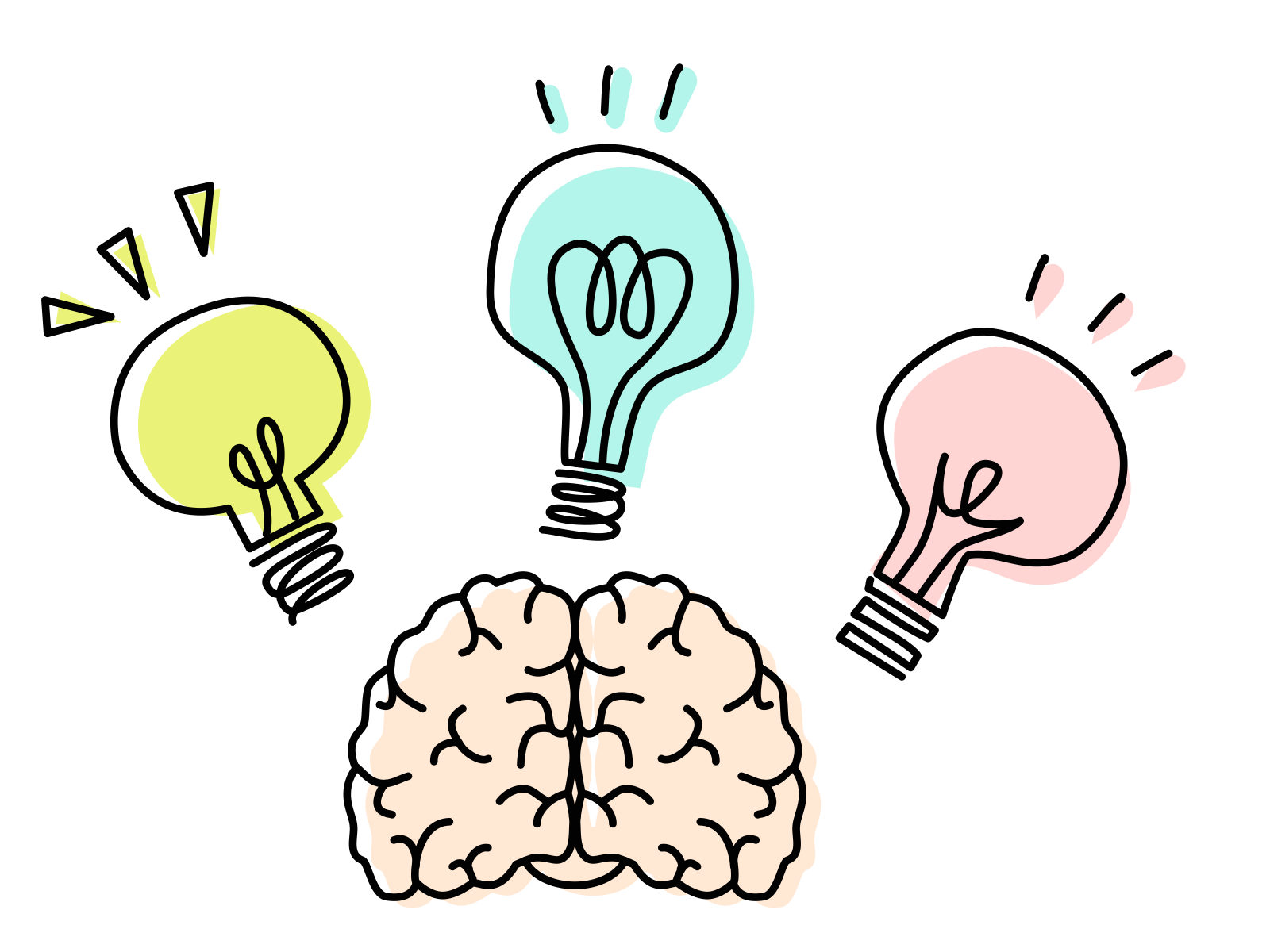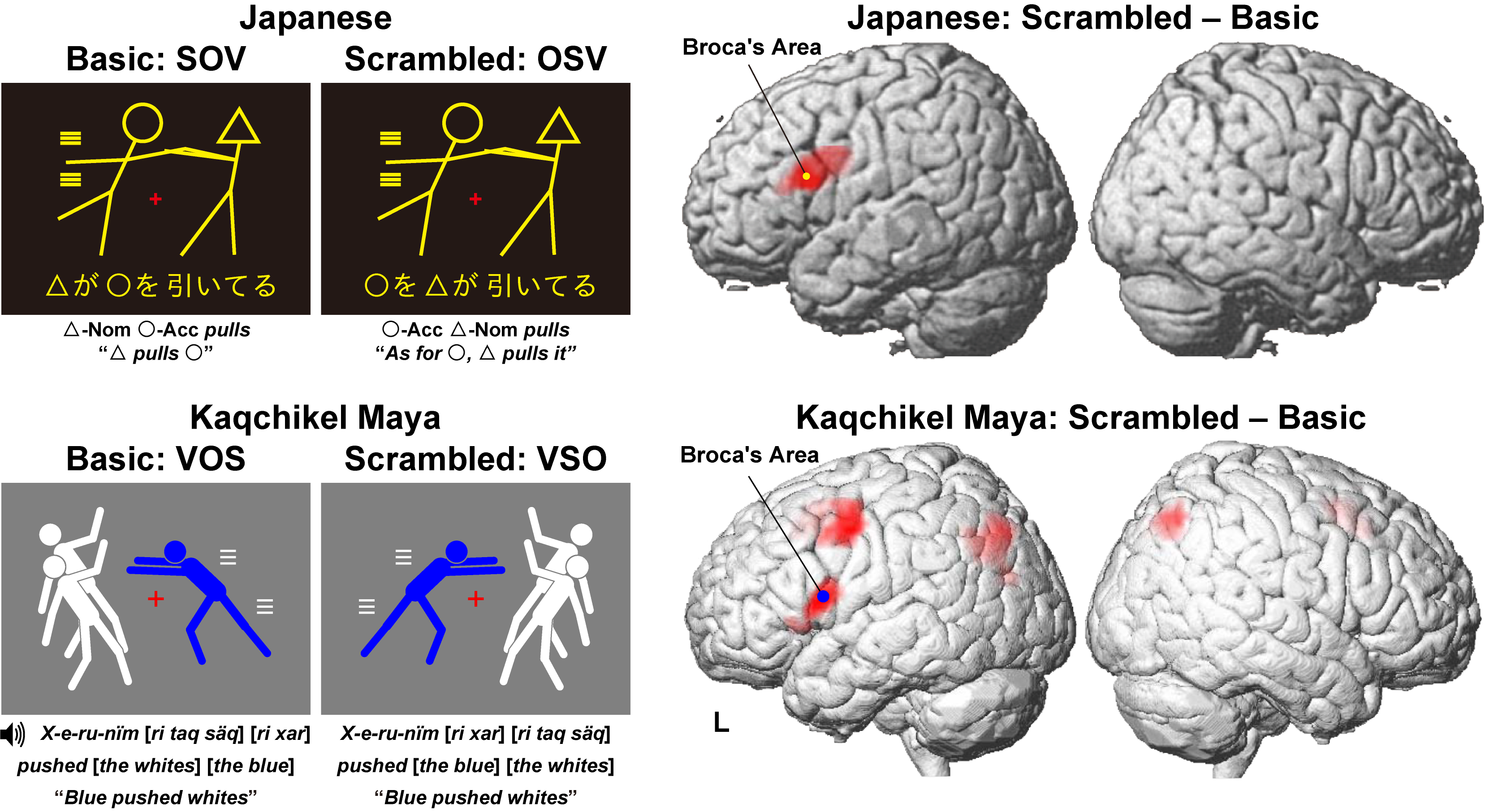Research
Research

Our laboratory investigates the neural mechanisms of language by combining functional neuroimaging, which can measure neural activity non-invasively (i.e., without damaging the brain), with theoretical linguistics as represented by generative grammar.
By demonstrating various hypotheses on human language proposed by theoretical linguistics through neuroscience experiments, we attempt to elucidate the human-unique neural mechanisms for producing and understanding language.
Our research has important social significance related to education and medicine.
Research 1) Is the brain mechanism underlying language universal?
In Japanese, subject-object-verb word order (i.e., basic word order) and object-subject-verb word order (scrambled word order) sentences can be used. In linguistics, such a change in word order is called “scrambling,” and it is hypothesized that changes in word order result in a more complex sentence structure. In addition, neuroscience has shown that the brain region called Broca’s area, which is related to syntactic processing, is activated while comprehending complex sentences.
We targeted Japanese and Kaqchikel Mayan, a minority language spoken in Guatemala, Central America, and examined how scrambling changes neural activity. We found that scrambling activated Broca’s area in both languages. These results suggest that the neural mechanisms of language are common to all human languages.

Research 2) Can we explain language disorders in patients with brain tumors?
Patients with brain tumors show different activation patterns of neural activity than healthy individuals. Using fMRI to examine the neural activity during sentence comprehension in healthy individuals and brain-tumor patients, we have demonstrated three language-related networks in the brain. We have also discovered that brain-tumor patients with language disorders lose information transfer within these networks compared to the healthy controls.

In addition to this research, we are conducting experiments using transcranial electrical stimulation, which can modulate neural activation non-invasively by very weak electrical stimulation. In these experiments, we are studying whether changing the neural activity related to language improves performance in learning foreign languages or reduces language impairment.
Transcranial electrical stimulation allows us to investigate how changes in brain activity alter cognition and behavior, thus elucidating the causal relationship between the brain and cognition/behavior, which cannot be revealed by other neuroimaging techniques, such as EEG, MEG, and fMRI.

